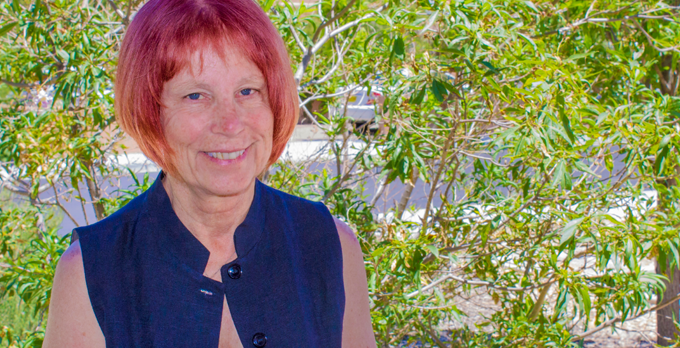University of New Mexico Health Sciences Superfund researchers have agreed to partner with their counterparts at the University of Arizona and Texas A&M to create a regional collaborative to enhance data science, research translation, training and community engagement.
The Southwest Superfund Consortium in Data Science is meant to help the three Superfund research centers accomplish their goals by establishing communities of practice in data management/data science that deliver cross-center training, provide expert consultations and share approaches and tools.
“We all have points of overlap and points of difference,” said Johnnye Lewis, PhD, emerita research professor in the UNM College of Pharmacy, who has studied the environmental and health impact of uranium mining waste on Indigenous people via the METALS Superfund Research Project.
“All three of us have to accomplish these same goals of collecting data, making sure it’s of high quality, and analyzing it in ways to give us the most information to reduce risk. So, looking for how places that are so different can also have similarities to learn from each other is an interesting opportunity.”
Texas A&M primarily focuses on disaster response preparedness in underprivileged urban neighborhoods, she said, while the University of Arizona works with rural Indigenous and Hispanic communities adjacent to copper mines. Meanwhile, she said, the recent conflagration at a plastics factory in Albuquerque, which emitted huge clouds of toxic smoke, has heightened awareness that the UNM team also has a role to play in disaster response.
The collaboration should lead to improved data collection and analysis practices that address privacy concerns on the part of Indigenous and minority communities, Lewis said.
“Tribes are sovereign nations, and that confers rights to sovereignty over their data,” she said. “We’ve spent a lot of time looking at how we can both protect the privacy of the people we’re working with and yet still provide access to people who can actually make things better, and how do you marry those two approaches.
“That is one of the things that’s going to ultimately be beneficial for a lot of communities that have that very same concern, especially if you look at immigrant communities and minority communities that are already feeling disenfranchised – that already have a history of environmental injustice and distrust and don’t want to participate in research because of that lack of trust.”
At a recent meeting in Albuquerque, representatives of the three programs identified a number of areas where they can to leverage their strengths to promote rigorous, open and collaborative environmental health science.
“Many of our graduate students and postdoctoral fellows could benefit from the combined expertise and tools the three programs have to offer,” said Matthew Campen, PhD, Regents’ professor in the UNM College of Pharmacy. “The diversity of research focus and applied data science approaches can create a more complete experience for our trainees.”
The Superfund program, administered by the U.S. Environmental Protection Agency, was established in 1980 to identify and clean up contaminated industrial and mining sites. UNM is part of a parallel network of Superfund Research Centers supported by the National Institute for Environmental Health Sciences to evaluate environmental hazards and health at some of those sites to better inform the understanding of risks and strategies to reduce risk, Lewis said.
